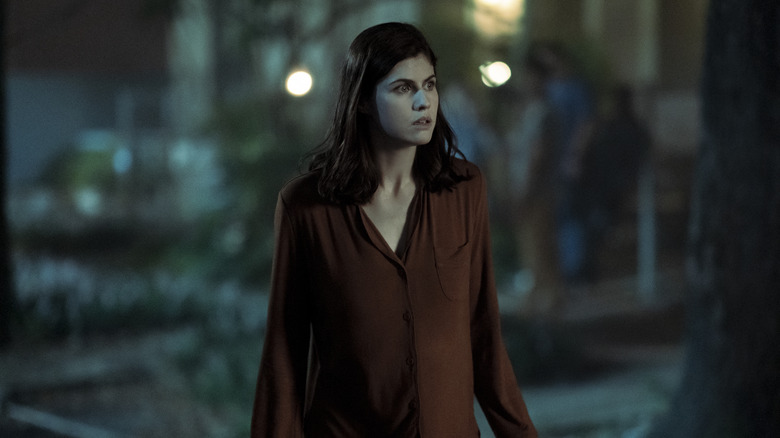Source: SlashFilm
Published and curated from SlashFilm Read More
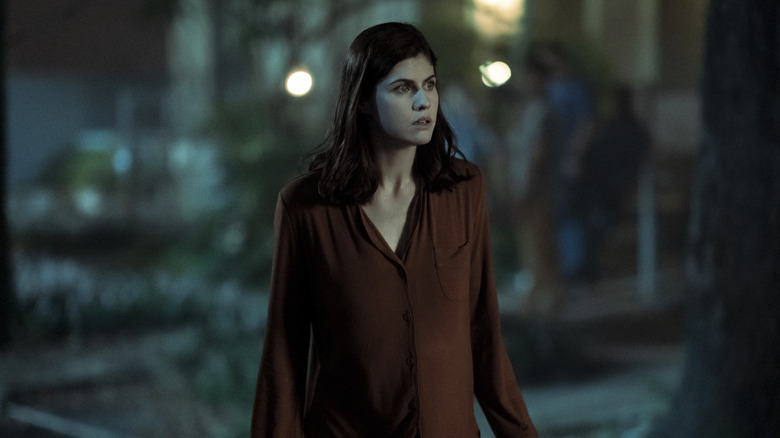
This post contains spoilers for the first three episodes of “Mayfair Witches.”
“Anne Rice’s Mayfair Witches” is AMC’s second installment in what they hope will be an expanding Anne Rice universe. (“Interview With The Vampire,” which premiered in late 2022, was the first.) The story follows a surgeon named Rowan (Alexandria Daddario) who finds out she’s actually from a multi-generational family of witches, with the first season adapting “The Witching Hour,” Anne Rice’s thousand-page first novel in her “Lives of the Mayfair Witches” series.
Converting such a long book into eight episodes is no small feat, and when I talked with “Mayfair Witches” showrunner Esta Spalding during the Television Critics Association winter press tour, she acknowledged that not everything in the first book made it into the season. “We had a whiteboard that was the greatest hits that we had to use, and of course we couldn’t use them all,” she told me.
There are, however, a lot of memorable moments from Rice’s original story that did make it into the show. I had the chance to talk with Spalding as well as executive producer Michelle Ashford at TCA about some of those moments, and how surgery and witchcraft have similarities, how “Three Kings” was an inspiration for a certain scene, and how rockstars like David Bowie were the foundation for portraying a major character.
Note: This interview has been lightly edited for clarity and brevity.
‘It Was Fun To Think About A Witch Having Some Bird S*** On Her Car’
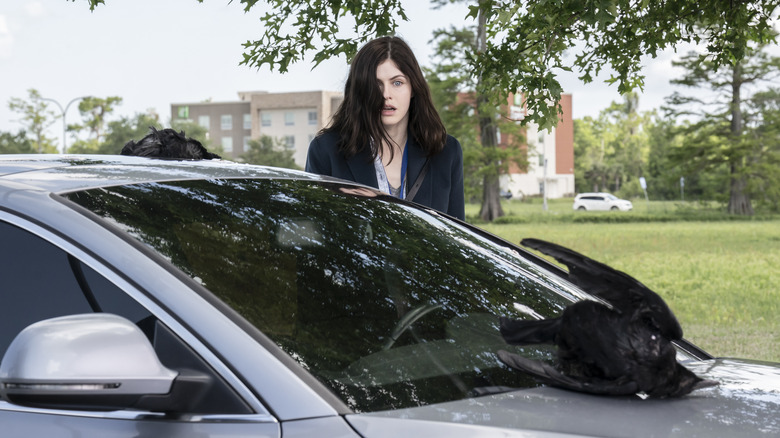
There are a lot of moments in the show where things get really intense and really out there. When you were working on the first season and adapting the book, was there any scene where you were like, “I don’t know how we’re going to do this on a show, but we have to do it?”
Spalding: There were. I mean, the book is so rich, right? There’s a thousand pages and there were just so many fans of the books in the writers’ room, and we all had different favorite moments. We had a whiteboard that was the greatest hits that we had to use, and of course we couldn’t use them all, because you’re also trying to give a throughline to the characters. But I feel that fans will see and go, “Oh, there’s that moment.” One of the big ones was just the first generation of witches and Lasher’s origin story, and making sure we had that reflected into Rowan’s story.
There’s a few scenes where Rowan has these powers but obviously doesn’t know it yet, and she inadvertently causes brain vessels and arteries to burst in people, and you actually go inside the person’s body and see it, which I thought was a really interesting way to show that. How did you decide to show her using her power in that way?
Ashford: Oh, we just talked about it endlessly. We were like, “What are witches’ powers?” And we started going down this really interesting path with this notion that she’s a doctor. It seemed like her power needed to be connected to that somehow and couldn’t be totally different.
Spalding: And the biological sight imagery is one of the super interesting things about the book. Rice picked that as a power because Rowan is a doctor and because she comes out of this background of 12 generations before her of healers and midwives. That her witchy power comes from the human body is, I think, super fascinating.
Ashford: We felt that really held together. We actually were talking about the movie, “Three Kings.” I don’t know if you remember that?
Is that the military movie with George Clooney?
Spalding: Yeah, and there are these moments where the bullet goes inside, and you follow it.
Ashford: You’re watching the bullet go in and explode body parts and stuff, and we thought, “Oh, that’s so cool.”
And it definitely also had an impact in how it tied in with the dead crows in the second episode.
Spalding: That was really fun in the writers’ room — to think through what happens when things go haywire and absolutely awry. It was fun to think about a witch having some bird s*** on her car.
‘It Was Just Finding What New Orleans Had And Bringing That Into The Atmosphere Of The Show’
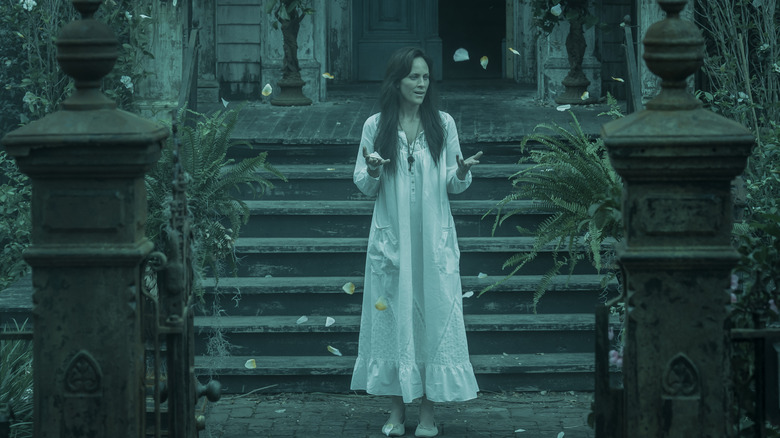
So obviously the show is part of a larger Anne Rice universe where each show is free to develop their own aesthetic. Could you talk about how you approached creating the specific aesthetic for your show?
Spalding: From the very beginning, part of what drew us into the material was things like the incredible drowsy tree, the oak tree with Spanish moss, and the dripping hot New Orleans world of the book. It’s dreamy and has these ghosts, and how do we recreate that? For one thing, we had an amazing crew, production designer, and all those departments in New Orleans. People knew the city really well and loved the books. Our production designer listened to the audio book of “Witching Hour” all season long, as she was working and stuff.
There were just interesting, odd choices as well. Our director of photography said we had to shoot in a slightly different aspect ratio than most TV shows, so we would be able to shoot the architecture of New Orleans better — we’ll be able to suggest the height of those houses that aren’t the typical height for U.S. architecture.
It just felt like everybody really threw themselves into the vibe of the books, and in their own department looked for ways to make it all come to life. Our props person found all these extraordinary old items out of New Orleans or designed things based on designs he’d seen from the turn of the century. We were really lucky that the people on our crew were so committed to the aesthetic of the book, which became the aesthetic of the show.
Ashford: Even in the very beginning of the pilot, we wanted to show that we were in a hot, slightly decrepit, weird, mossy place. We wanted you wanted to feel it, because it is so true about New Orleans.
Spalding: In every aspect. I’m thinking in that first scene — so much of how you feel about that house is the sound design, is the cicadas, is the frogs, is all that. And as we went along through the season, we also adapted the show for things that we found in the city.
In the third episode, we have this big set piece in this cemetery and my assistant said, “There’s this group called the Skull and Bones Gang, and they’ve been performing for hundreds of years. They carry this tradition, they have all their own songs, they make their own papier-mâché costumes. I don’t think they’ve ever been shown on TV or in a movie.”
So we call up the big chief who is the head of this and say, “Would you be interested?” We met with them and yes, they’re interested. And they came and recorded a bunch of their music for us.
So we found parts of New Orleans and used talent from New Orleans. There’s a singer, Quinta, who’s playing in the bar in the Pontchartrain in the second episode, and he is a New Orleans local musician. And this young Filipino burlesque dancer, Grandma Fun, we pulled into the parade. It was just finding what New Orleans had and bringing that into the atmosphere of the show.
‘There Was A Rigor To Both Sets Of Things, And I Felt Really Gratified That We Tried To Get It Right On Both Counts’
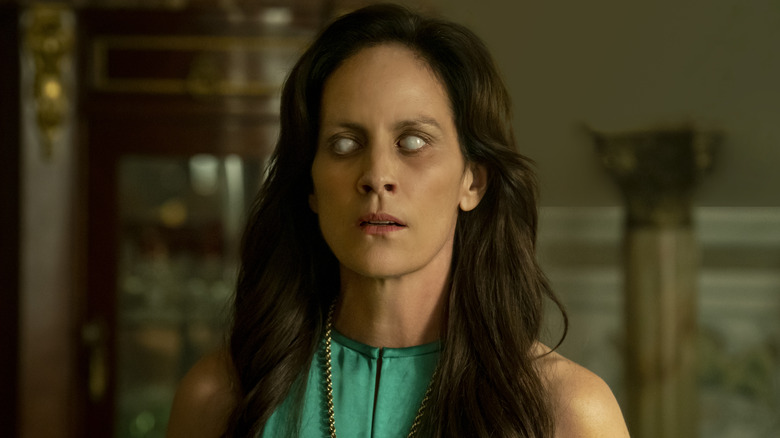
The show also touches on how there’s the science world and there’s the supernatural world and they’re very, very different. I heard you had both medical and witchcraft consultants for the show, and I wondered, even though they are so different, were there any parallels between them?
Spalding: When we were talking to the surgeon consultant about brain surgery and so on, you really feel the precise nature of the work they do. I have to admit, I was surprised and totally invigorated to find out the witchcraft consultants were the same. It was like, “And this would be mixed this way, and this spell would be done this way.” It didn’t feel like loosey-goosey at all. There was a rigor to both sets of things, and I felt really gratified that we tried to get it right on both counts.
There are many different kinds of witchcraft, so obviously we are following, given the Talamasca, a particular version of witchcraft. But again, there was a preciseness within that. In the second episode, there’s a big Latin incantation that comes, and we had an amazing Latin professor. It was like, “Okay, this is a strange scene because she’s summoning a demon, so what would the case be?” I don’t even understand Latin, but there’s all these different cases, and he was like, “I’ll get back to you.” And he went and did a bunch of research and then he taught Annabeth Gish [who plays Deirdre on the show] how to say it properly. And then she ended up teaching all the other actors who would end up saying it over the next episodes.
‘He Could Be Both Scary And Seductive, Which We Needed The Character To Be’
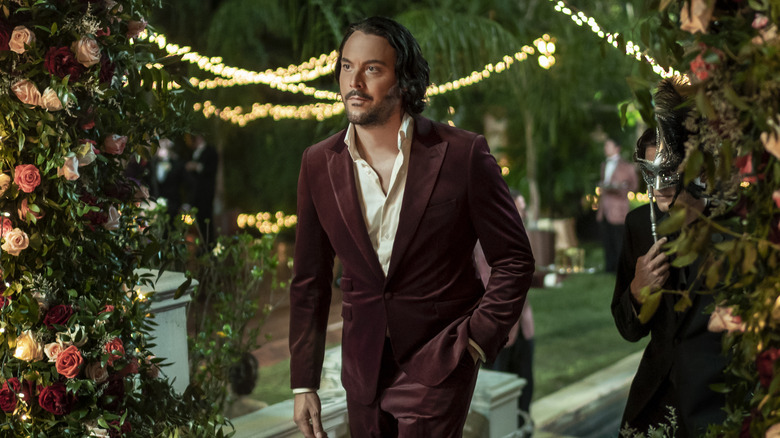
Obviously, Lasher is a crucial part of the story and he has, let’s say, an interesting relationship with the family. But it’s slowly revealed through the show who he is and what his deal is. It’s not laid on the table right away — he’s just this entity that some people can see, and obviously he has a connection to Rowan’s mother from the beginning. When you were approaching the adaptation, did you talk about how you wanted to lay out what people know about Lasher, especially for those who haven’t read the book?
Ashford: We spent endless, endless, endless hours talking about Lasher. Because he’s not human, we had to figure out what can he do and not do. Who exactly sees him, who doesn’t? And we went round and round, not only in the conception of Lasher and how we were going to portray that, but also who are we going to cast? Because it was like, “How do you cast a non-human?”
We got on this whole thing about how he should be a rockstar. We were thinking David Bowie or Mick Jagger. We were trying to get this sense of someone that’s bigger than life, but also really cool. And big rockstars were the closest thing we could think of.
Spalding: I mean, even up until as we were shooting and stuff, we were trying to figure it out. There were versions of the script where young Deirdre did not know that Lasher was supernatural and that was a discovery within the script. But then we realized that she has to be aware he’s supernatural because it’s just too many tricks. The audience needs to know that from the beginning. But how all of it would play out was the biggest question.
Ashford: Once we made Deirdre know he’s a non-human, then it was much easier. We just jump in and all of a sudden he’s here, he’s not here. he just shows up, he vanishes.
Spalding: We had already cast Jack Huston by that time and so it was also like we could write to Jack and his wonderful voice and his charisma. He could be both scary and seductive, which we needed the character to be, and we leaned into that.
‘We Want To Honor The Connections That Exist In The World Of Anne’s Books’
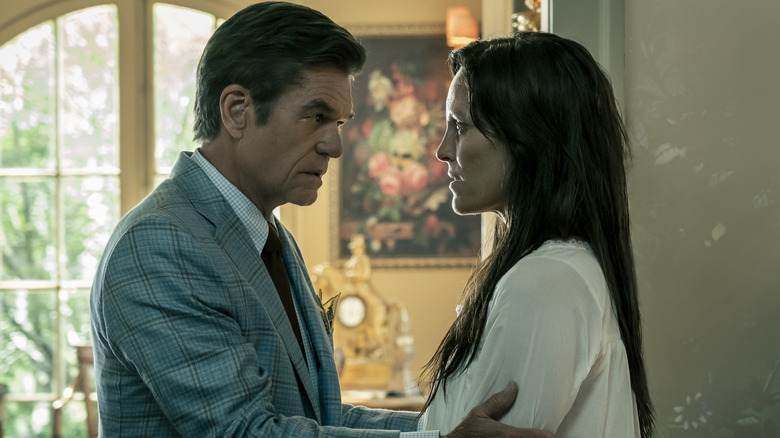
People also want to know if there’s going to be tie-ins with “Interview With The Vampire.”
Spalding: It’s super random, but there’s one character in the first season who overlaps.
In the future, hypothetically, if you could make anything happen, is there any particular character you would love to see crossover?
Spalding: Well, some of the characters in “Interview With The Vampire” do weave into Rowan’s story, and we really want to honor that. But because it’s a universe of shows, we’re also — I can’t say, “This is what we’re doing!” It’s very much a conversation — and Gran Via Productions are the ones that are helping us figure out which cards to turn over when, if that makes sense. So yeah, we want to honor the connections that exist in the world of Anne’s books.
New episodes of “Anne Rice’s Mayfair Witches” drop Sundays on AMC and AMC+.
Read this next: The 15 Best Anthology TV Series Ranked
The post Mayfair Witches Showrunner On Dead Crows And What Surgery and Witchcraft Have in Common [Exclusive Interview] appeared first on /Film.
